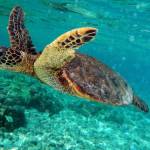Back From The Brink, Jamaican Iguana
1940 CE • Jamaica
“The Jamaican iguana's decline began in 1872. That year the colonial government imported one of the predators that still plagues the iguana today, the Indian mongoose (Herpestes javanicus).” By the 1940s, the population disappeared and the iguana was believed extinct. In 1970, the continued survival of the iguana was confirmed from a single individual and again in 1990, both found by hunter's dogs. ”This discovery inspired the formation of the IUCN SSC Iguana Specialist Group...Since 1991, the number of nesting females and annual hatchlings recorded has increased over six-fold, with at least 200 individuals in the wild today. Listed as Critically Endangered on the IUCN Red List of Threatened Specie the Jamaican Iguana population has been decimated by a combination of habitat loss and predation by invasive alien species. Agricultural and urban development, together with timber extraction for charcoal production, has degraded and fragmented the Jamaican Iguana's tropical dry forest habitat.”
“Jamaican Iguana Conservation Program Marks 20 Years of Success, Faces Worries about Next 20 Years,” John R. Platt , 11.14.2013, 20 years of conservation success for the Jamaican Iguana” IUCN, 10.22.2013
Courtesy of Simon Tonge


Learn about Maya Lin’s fifth and final memorial: a multi-platform science based artwork that presents an ecological history of our world - past, present, and future.

Discover ecological histories and stories of former abundance, loss, and recovery on the map of memory.

Learn how we can reduce our emissions and protect and restore species and habitats – around the world.

See how art can help us rethink the problems we face, and give us hope that each one of us can make a difference.

Help make a global memorial something personal and close to home. Share your stories of the natural world.


